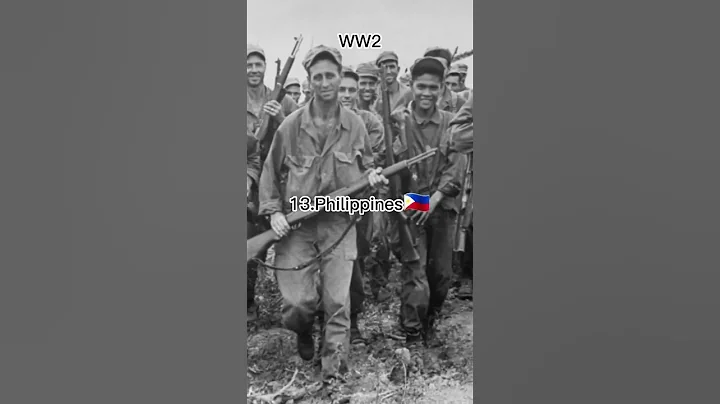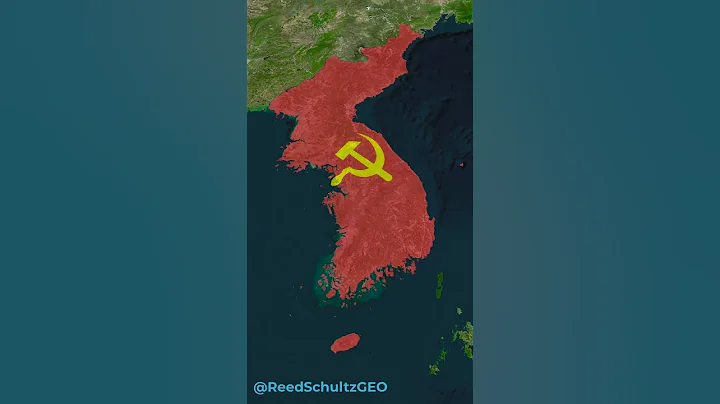

Before the publication of "Revealing the Topography of the Japanese Invading Soldiers - Japan's Battlefield Investigation of China in the Past 100 Years", there was no real research on the topography investigation of the Japanese Invading Soldiers' topography in the academic world. Even the Japanese themselves nor. However, there is a Chinese who has persisted in investigation and research for 35 years.
This person is the author of the book Shen Keni .
Military topography, as the name suggests, is related to military operations. It refers to the military intelligence data compiled by recording the military, political, economic, terrain, transportation, meteorology, hydrology and other conditions of the relevant area.
These soldier documents of the Japanese army are often marked with the words "extremely secret" and "secret", and each relevant combat division only has 4 volumes. After the Japanese army was defeated and surrendered, they ordered all these confidential information and the military flag to be burned. Our army captured them during the war Very few, very rare .
Shen Keni has invested a lot of time and energy in the collection and compilation of these materials. At the same time, it has also filled the academic gaps in the research on Chinese military topography and the origin and development of Chinese military topography.
In this issue, Sassou, who is also a well-known expert on military history, will have an excellent talk with Shen Keni on the theme of "Japanese military geography", revealing the ambitions of the Japanese army invading China over the past century, as well as the Sino-Japanese War of 1894 , The success or failure of major battles in " World War " is doubtful.
01 The Japanese army's ambition to invade China has been planned for a long time
Ten years before the Sino-Japanese War of 1894-1894 Qing Dynasty Civil servants have seen through the conspiracy
"Without Deng Shichang's Inchon landing in 1884, The Sino-Japanese War may have been advanced 10 years."
Sasu’s words , not without basis.
Shen Keni discovered through research that Japan’s ambition to invade China had been seen through by a Chinese civil servant as early as 10 years before the Sino-Japanese War of 1884-1894.
In the sixth year of the reign of Emperor Guangxu of the Qing Dynasty (1880), Yao Wendong was appointed as the attaché of Li Shuchang, the Qing government's envoy to Japan. While getting along with people in the Japanese government and the public, he was keenly aware that the Japanese government's ambitions were not only about Korea, but also the ambitions of the Japanese government. "Qing Dynasty".
At that time, Japan had already adopted military materials such as " Soldiers Want Japanese Geography Xiaozhi " as primary school textbooks. The extraordinary national defense awareness seemed to indicate the direction of militarism in this country.

▲ "Bing Yao Japanese Geography"
Yao Wendong, who is prepared for danger in times of peace, translated "Bing Yao Japanese Geography" and other related books into Chinese, and added armaments, garrisons, and artillery according to the characteristics of Chinese local chronicles , salary and other information; pay attention to the conversations of Japanese military officers during the trip and record the military information you hear.
He compiled the intelligence information about Japan collected in every possible way into "Japanese Geographical Soldiers " in 1884, hoping to print it to the Beiyang Navy battalions.

▲ Later, Shen Keni found "Japanese Geography and Military Essentials" in the Peking University Library. The "Chen Zhidong Seal" can be seen on it. This book was presented to Zhang Zhidong.
Yao Wendong is just an ordinary diplomat. No one instructed him to do this work, which shows his far-sightedness and sincerity in serving the country.
The Beiyang Navy back then was still very famous in Asia.
When the situation in North Korea was turbulent, China sent troops to Incheon at North Korea's request. Deng Shichang set out with China's best warships " Yangwei" and " Chaoyong" and quickly landed in Incheon Port. At the same time, Japan also went there after hearing the news, but the ship arrived a day late. It was unable to compete for the seaport that was already guarded by China, so it had to give up its intervention in North Korea.
No one thought that in just ten years, the Beiyang Navy, which was once well-equipped and famous, would enjoy its short-term glory so quickly.
There is such a detail in the Incheon landing. There was a section of the road where the landing was full of sharp stones. When the Qing team was hesitating, suddenly, an official made a remarkable move - he took the lead in pulling out his sword and jumping. Go down and rush up on the sharp rocks - his name is Yuan Shikai . The person who drew the topographic map for the Incheon landing was called Feng Guozhang .
The little-known details in Bingyao Gegeography are hard to avoid sighing when reading it now. Some people say that if the Qing Dynasty reused Yao Wendong, history could be completely rewritten based on his understanding of Japan's land and sea attack channels.
However, history has no ifs.
Whether in China or Japan, a group of people who were familiar with and at that time eventually became important figures of that era. For example, several giants in China's Beiyang Warlord era were Feng Guozhang, Duan Qirui, Wu Peifu, and Japanese "World War II" Class A war criminals Itagaki Seishiro, Okamura Neiji, Doihara Kenji, etc.
Shen Keni explained that military geography is the basis for formulating combat plans and is the business of the headquarters. People such as Okamura Neji, Itagaki Seishiro, and Doihara Kenji are all in the Japanese General Staff Headquarters and Army University He has served in various positions and studied China's military and geographical locations. He has also been there in person and is familiar with China's battlefield conditions, which gives him a combat advantage. It is they who owe China a heavy debt of blood.
For example, Okamura Neiji, who later became the commander-in-chief of the Japanese invaders, once served as a consultant in Sun Chuanfang's army and took the opportunity to steal maps. After Sun Chuanfang's defeat, when he fled in a hurry amid a hail of bullets, Okamura Neiji threw away everything, but he only had this set of 1:50,000 maps of central China in his arms.

▲ Okamura Neiji and his stolen 1:50,000 topographic map of Central China
These maps, and even his understanding of the topography of Chinese military fortresses, played a role in the war of aggression against China.
02 The "September 18th Incident"
was actually caused by the Japanese army's investigation of the topography of the Northeastern Army.
Before the "September 18th Incident" , Japan had already made a lot of preparations for the invasion of Northeast China. The investigation of soldiers is one of the important ones.
At that time, China's South Manchuria Railway had been controlled by the Japanese. They held "staff tours" in the controlled areas every year, that is, they sent officers to record along the way, including garrisons, supplies, mountains and rivers, etc., so that they could prepare for the war. Control these areas as quickly as possible.
Nakamura Shintaro is an Army Captain of the Japanese General Staff Headquarters. He once entered my country's Heilongjiang region in disguise, as well as in our military restricted zones Zhalantun and Hulun Buir area to conduct surveying and mapping and collect local information for compilation of important military locations. Chi.

▲ Nakamura Shintaro and Isugi Entaro disguised as scouts in Northeast China
The Chinese side also knew the importance of the military's strategic location. After catching Nakamura Shintaro in Hulunbuir, he was executed for espionage. This incident caused great repercussions in Japan. The Japanese army realized that China actually had the awareness and preparation to resist aggression, so they accelerated the pace of aggression and expansion.
Less than three months later, Japan launched the "September 18th Incident" that shocked China and the world, opening the prelude to the Eastern battlefield of World War II. Northeast China soon fell.
However, one thing worth noting is that the Hulin area was the last to fall in the Northeast, and Hulunbuir held on until December 1932, which was one year and four months after the "September 18th Incident". moon.
Why has China been able to hold on for so long?
Sassou analyzed that in addition to the focus of the Japanese army's strategy, another important reason is that after Nakamura Zhentaro was killed, they did not know the strategic terrain of this area very well and did not dare to attack so fast.
Japan won successive victories in the battlefield of invasion of China by virtue of its detailed and comprehensive military and geographical records. However, success requires troops, and defeat also requires troops.
03 Continuous defeats in important battles
The Japanese attributed the defeat in World War II to the military geography
"Japan's military and historians believe that insufficient investigation of military geography led to Japan's defeat in World War II." Shen Keni said.
The intelligence staff officer of the 25th Army of the Japanese Army once lamented that the failure of the Pacific War was due to insufficient investigation of the soldiers. In his diary and memoirs, Okamura Neiji also criticized the Japanese military attache for attaching importance to the interpersonal relationships between warlords. The terrain of the troops was ignored.
Indeed, looking at the defeat of several important battles of the Japanese army during the "World War II", it is not unrelated to the strategic location of the army.
Okamura Neji suffered heavy losses when he attacked Lushan. He wrote a special sentence in his diary:
"The enemy is not the enemy, but the mountains and rivers are the enemy. I don't love mountains and rivers in battle."
In the Japanese army's military map, They attach great importance to sanitation and drinking water on the battlefield. During the Sino-Japanese War, more people died of illness than were killed due to acclimatization. Weather was also a very important part of the Japanese military's geographical map. When Okamura Neiji attacked Hunan , and finally used the meteorological data from the Manchuria Railway Survey Department. He believed that the records in the Bingyao Geography were not detailed enough.
In addition, the survival conditions on the battlefield are also a part of the military geography that cannot be ignored.
The Japanese army was completely wiped out on Guadalcanal Island. Shen Kenney later found the "Guadalconral Island Military Fortress Map" during his investigation, and found that there was only one sentence in the record of battlefield survival conditions: There are coconut.
The lack of records and incompleteness caused the Japanese army to find out after landing on the island that they landed at the wrong time, which coincided with high tide, and the army had nowhere to stay. After food was cut off, there were no edible plants on the island, and the army was starved. In addition, there was insufficient firepower. , and was finally eliminated by the US military.
The strategic location of the military base once fueled the Japanese army’s ambition to invade China, and also ended its process of domination and expansion.
04 Looking for the "Last Battlefield of World War II"
In order to explore the very important survival experience in cold areas during the 14-year Anti-Japanese War, Shen Keni and Sassou once went to Suifenhe to visit the Anti-League camp, and they formed a "community" friendship.

▲Sassu (left) and Shen Keni (right) tasted wild vegetables eaten by the Anti-Japanese League in Changbai Mountain
"At that time, there was a topic called finding the last battlefield of World War II, which required an inspection to Dongning Fortress. It was also during this inspection. I saw that Mr. Shen, as an expert on military geography, not only has profound theoretical attainments, but also has an amazing ability to apply theory to actual combat," said Sassou.
Searching for the location of the Eighth Route Army prisoners of war uprising in 1943 is one of the tasks of this inspection. However, more than seventy years have passed, and witnesses and witnesses of the incident have passed away one after another. It is still unknown whether the prisoner of war labor camp can be found.

▲Japanese army records of the uprising launched by Eighth Route Army prisoners of war
The expedition team obtained a contour map drawn after liberation from the Dongning cultural management department, but many annotations confused everyone.
After careful study, Shen Keni analyzed: "Building this fortification requires building materials, river sand, and stones. They can't look far away. It should be near the river beach, which is the side with sparse contour lines on the map."
Sure enough, following his direction, the expedition team found the site of the prisoner-of-war labor camp across the Xiaowushegou River.
The next search for Shenghong Mountain Fortress was the same. There is a place marked "Sunset Hill" on the
map. Its location in the actual terrain confuses everyone: The sun sets from the west, why are the mountains in the east called "Sunset Hill"? The Japanese army in World War II was an elite force. How could they not distinguish between east and west?
"It wasn't until later in the investigation that we found out the meaning behind it in detail: the Japanese army should have used the location of their observation as a reference, which means they were looking from the east, so there must be special fortifications or locations in the east."
Sure enough, , looking in the opposite direction, three words came into view: Shenghong Mountain.
"We found the place where World War II ended, and completed our mission of finding the last battlefield of World War II."

▲The last battlefield of World War II
Sassou later smiled and sighed. During the scientific examination, there was a man who understood Experts in military and geographical knowledge will make the inspection more effective with half the effort.

▲Shen Keni (left) and Sassou (right) during the inspection of the Dongning Fortress of the Japanese invaders
“Although expeditions do not require the ability to be a soldier or topography, before each expedition, you must be like a soldier and need topography. Also understand the humanities, geography, etc. of the place you are going to, otherwise the adventure will become an adventure. "
05" The Anti-Japanese War is not over for me yet"
"The Anti-Japanese War is not over for me yet!" Shen Keni! explain.
During these years of studying Japanese military geography and Chinese military theory, he often walked in the mountains and rivers, combining walking with reading.

▲Shen Keni was invited to Moscow to attend an international conference and had a pleasant conversation with General Galiev, the former Russian Defense Minister who attended the conference.

▲Sassou and Shen Keni donated their respective works to General Galiev

▲Shen Keni lectured at Waseda University in Japan on the geographical map of the Japanese invaders' strategic locations
"The Secret of the Japanese Invaders' Strategic Maps of China - 100 In the book "Japan's Battlefield Investigation of China in the Past Years", covers many first-hand historical materials and objects, such as the "Sichuan Provincial Military Fortress Chronicles", "Pingyang Zhenbing Fortress Chronicles", aviation Cameras and teaching materials, as well as "model orders" such as the "Infantry Drill Code", "Combat Priorities Order", and "Land Warfare Instructions". At the same time, many historical mysteries have been revealed. For example, quoted Japanese military important geographical records a hundred years ago to prove that Diaoyu Islands do not belong to Japan.
During the epidemic, Shen Keni spent another year completing the research and review of "A Trial of the Russian Military's Geographical Map" and "Taiwan's Military Geographical Map", but they were not included in the book in time.
For him, his personal "war of resistance against Japan" will not stop until the evidence of the crimes committed by the Japanese invaders is made clear to the world.












![[Source: Zhongan Online] Zhongan Online and Zhongan News Client reported that on the morning of July 5, the "Civil Air Defense Shield Jianghuai" - a publicity exhibition and theme on national defense mobilization laws and regulations, co-sponsored by the Anhui Provincial Civil Ai - DayDayNews](https://cdn.daydaynews.cc/wp-content/themes/begin/img/loading.gif)









